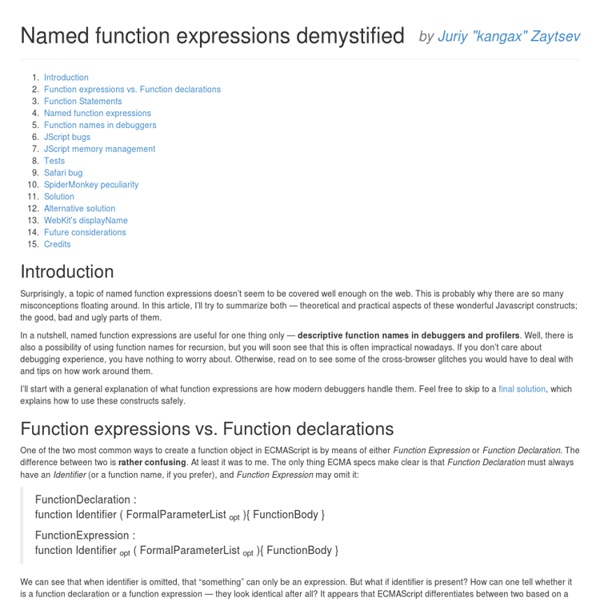Named function expressions demystified

Getting Out of Binding Situations in JavaScript
Most developers don’t know about—or don’t care enough about—binding in JavaScript. Yet this single issue is responsible for a sizeable portion of the questions on most JavaScript-related support channels, and thousands—if not millions—of hairs being tortured away from developer heads every single day. Yet with a little attention to this oft-overlooked subject, you can avoid wasting your time, energy, and patience and move on to more powerful, efficient scripting. Why should we care about binding? Almost no major object-oriented programming (OOP) languages force you to consider binding. PHP and JavaScript do require you to explicitly state which object you’re accessing, even if it’s the current one. Of course, neither PHP nor JavaScript are actually object-oriented in the traditional sense. In JavaScript, binding is always explicit, and can easily be lost, so a method using this will not refer to the proper object in all situations, unless you force it to. Let’s step in it#section2 Ah-ha!
JavaScript: la référence - David Flanagan
Related:
Related:



